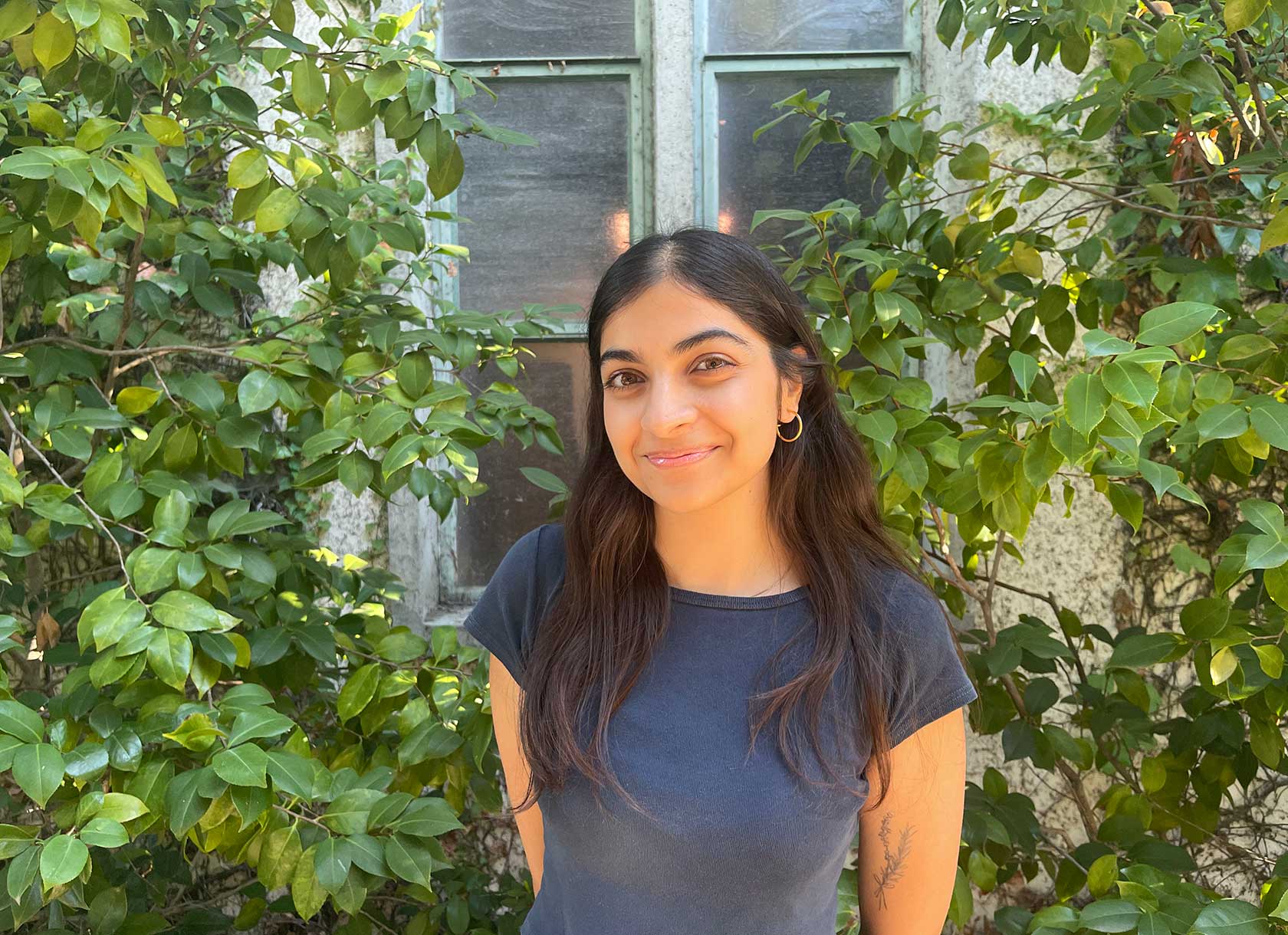By Mаdeleine Nаkаmura

In a world still grappling with the effects of the COVID-19 pandemic, one of the most pressing issues facing developing nations is healthcare inequity. The question of how media and misinformation influence public health—for instance, by increasing hesitancy around vaccination—continues to impact humanity on a global scale.
Through the Mary W. Johnson and J. Stanley Johnson Research Award, established in 1995 to support Scripps students’ summer research, Simar Malhotra ’25 has spent the past several months digging into the relationship between media exposure and health. In light of how fundamentally our consumption of information has changed in the digital age, it’s crucial to understand the ways in which even our health is impacted by the messaging we receive, and Malhotra aims to examine those connections.
Specifically, Malhotra’s research under Nayana Bose, Associate Professor of Economics, focused on media exposure and its correlation with polio vaccine uptake for children throughout different districts in India. By gathering and interpreting data from different surveys about household television access and vaccination outcomes, Malhotra measured differences between a “treatment” group (people exposed to vaccine-related media campaigns) and a control group (those without media access). She found that children from households with access to color television had higher vaccination rates than children from households without the same access. While a causal conclusion can’t be drawn yet, this research is an inroad into understanding the role of media in public health.
“Getting to work directly with a topic that pertains to India is very important and gratifying to me, given my deep connection to and lineage from the country,” Malhotra explains. Her research was inspired by the successful eradication of polio in India in 2011, after the launch of several large-scale media campaigns using Bollywood actor Amitabh Bachchan as a spokesperson. Malhotra hypothesizes that the key to these campaigns’ success was Bachchan’s status as a revered superstar of the Bollywood canon; the more esteem a public figure is held in, the greater their potential to influence public health outcomes.
Malhotra recognized the value of studying India’s media strategy against polio, given the impact of COVID-19. “I found this area of study incredibly relevant considering our current post-COVID climate,” she says. “In the last few years, we have seen a rise in vaccine hesitancy all over the world, and studying the tangible effects mass media can have on vaccination outcomes can help us in identifying worthwhile strategies to pursue—especially in developing nations, where improved vaccination status can greatly improve countries’ overall health.”
In addition to data analysis, Malhotra’s research involved extensive reading. She conducted an in-depth literature review, compiling and summarizing established articles on the subjects of immunization and media; studied vaccine barriers and benefits, as well as vaccination’s impact on health, education, and later-life outcomes; and read articles that highlighted media’s potential impact on socioeconomic outcomes and well-being.
In order to develop her own effective methodology for working with the data she compiled, Malhotra devoted significant time to poring over development journals in search of related research. While working with data at such a complex scale was a new and challenging experience for her, she found it to be a rewarding one. “The process of exploring, understanding, cleaning, and trying to analyze such large, complicated datasets has been extremely beneficial,” she says. “It can be messy and overwhelming, but it has ultimately made me more comfortable in data interpretation.”
Malhotra’s research topic meshes closely with her chosen field of study, economics, and with her interest in improving conditions for people living in low- and middle-income countries. “Improving the health of developing nations through increased vaccination is extremely beneficial and has tangible effects on individuals’ and future generations’ educational and monetary outcomes,” she says. For instance, childhood vaccination is associated with increased educational attainment, and persistent infections during early life can do lasting damage to physical and cognitive health.
Malhotra believes the Johnson Research Award has allowed her to further develop a skill set that will serve her in her future endeavors, whatever they may be, and hopes that her work can be used to strengthen the study of how society can best encourage vaccine uptake. It’s clear that the spread of knowledge is an integral factor of public health, and the question of how health organizations can most effectively inform people is a crucial one in today’s media landscape.

